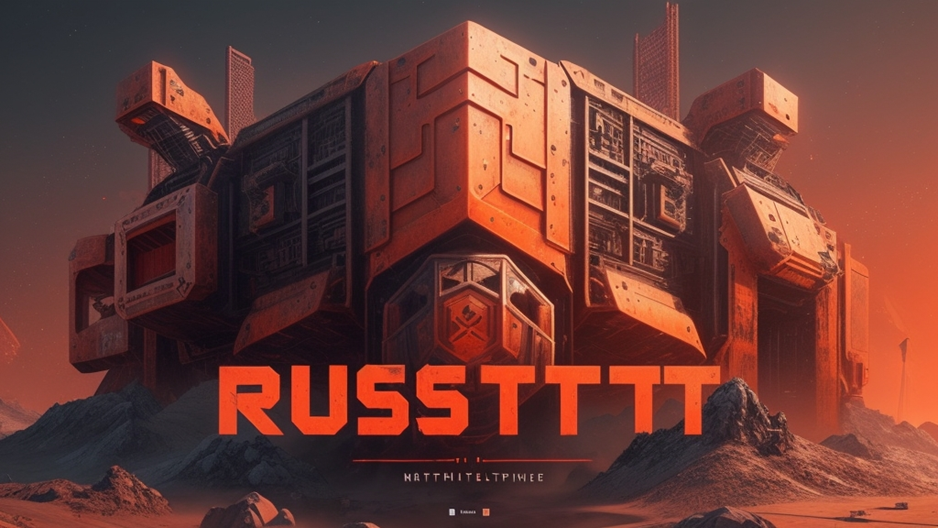Everything about Rust

Rust is a systems programming language that has gained significant popularity in recent years due to its focus on performance, safety, and concurrency. In 2006, the software developer, Graydon Hoare, started Rust as a personal project while he was working at Mozilla.
What is Rust for?
- Rust is designed for systems programming, which involves writing software that interacts directly with hardware, operating systems, or low-level components.
- It is particularly well-suited for developing: Operating systems and kernels, Device drivers, Virtual machines, Web browsers, Game engines, Distributed systems, Embedded systems etc.
What is Rust used for?
- Rust is used in a wide range of applications and projects, including:
- Mozilla’s Servo web browser engine and various components of the Firefox web browser
- The Deno JavaScript/TypeScript runtime
- The Redox operating system
- The Tor network’s core networking component
- Dropbox’s Infinity Cache engine
- Cloudflare’s workers and other infrastructure components
- Game engines like Amethyst and Veloren
Why is Rust getting so popular?
Rust has gained popularity for several reasons:
- Memory Safety: Rust eliminates entire categories of memory-related bugs, such as null pointer dereferences, buffer overflows, and data races, without needing a garbage collector. This makes Rust an attractive choice for developing secure and robust systems.
- Performance: Rust provides performance comparable to low-level languages like C and C++, making it suitable for performance-critical applications.
- Concurrency: Rust’s ownership model and type system make it easier to write safe concurrent code, a crucial aspect in today’s multi-core and distributed systems.
- Abstraction and Productivity: Despite its low-level focus, Rust provides high-level abstractions and modern language features that improve developer productivity, such as algebraic data types, pattern matching, and functional programming constructs.
- Ecosystem and Community: Rust has a growing and vibrant community, with a rich ecosystem of libraries, tools, and resources. This fosters collaboration, knowledge sharing, and ongoing development.
Open Source:
- Rust is an open-source project sponsored by Mozilla Research, ensuring transparency and community involvement in its development.
- Cross-Platform: Rust code can compile and run on various platforms, including Windows, Linux, macOS, and embedded systems like ARM and RISC-V.
- Tooling: Rust provides excellent tooling, including an integrated package manager (Cargo), a powerful build system, and robust documentation tools.
- Adoption: Major companies and organizations, such as AWS, Microsoft, Google, Dropbox, and Mozilla, have adopted Rust for various projects, contributing to its growth and adoption.
Comparison of Rust with some other popular programming languages:
Rust vs. C/C++:
- Addressing memory safety issues that often lead to vulnerabilities in C/C++ programs.
- Rust provides automatic memory management through its ownership and borrowing concepts, eliminating the need for manual memory management and reducing the risk of common memory-related bugs like null pointer dereferences, data races, and buffer overflows.
- Rust has a more modern syntax and incorporates features from functional programming languages, making it more expressive and easier to write safe concurrent code.
- Performance-wise, Rust can match or even outperform C/C++ in many scenarios due to its lack of runtime overhead and efficient compiler optimizations.
Rust vs. Go:
- Both Rust and Go are designed for systems programming and can be used for similar domains like operating systems, network services, and low-level applications.
- Rust has a more complex type system and follows a more traditional object-oriented programming paradigm, while Go favors simplicity and a lightweight approach.
- Rust’s ownership model and borrow checker provide stronger memory safety guarantees compared to Go’s garbage collector.
- Go’s concurrency model, based on goroutines and channels, is often considered more straightforward than Rust’s approach, which uses lightweight threads and message passing.
- Rust’s performance is generally considered better than Go for CPU-bound tasks, while Go’s performance is often better for I/O-bound workloads.
Rust vs. Java/C#:
- Rust is a systems programming language designed for low-level programming, while Java and C# are primarily used for application development and have a managed runtime environment.
- Rust offers better control over memory management and low-level system resources, making it suitable for performance-critical applications and systems programming tasks.
- Java and C# have more extensive standard libraries and tooling ecosystems, which can make development more productive for certain application domains.
- Rust’s ownership model and borrowing rules can be more challenging to learn compared to the garbage collection mechanisms in Java and C#.
Rust vs. Python/JavaScript:
- Rust is a statically typed, compiled language focused on performance and system-level programming, while Python and JavaScript are dynamically typed, interpreted languages primarily used for scripting and web development.
- Rust offers better performance and control over low-level details, making it suitable for tasks like game development, operating systems, and high-performance computing.
- Python and JavaScript have simpler syntax and are generally easier to learn and prototype with, but they may not be as suitable for performance-critical or resource-constrained environments.
- Rust’s type system and ownership rules provide stronger guarantees about program behavior and memory safety compared to Python and JavaScript.
Learning Resources:
- Official Documentation: RUST Documentation
- Rust Roadmap: https://roadmap.sh/rust
- Github Repository: https://github.com/rust-lang/rustlings/
- Course: https://exercism.org/tracks/rust/
Challenges and Limitations:
- Steep learning curve, especially for the ownership model and borrowing rules
- Relatively young ecosystem compared to more established languages
- Limited support for certain domains or libraries compared to more mature languages
Future of Rust:
- Rust is poised to become a dominant language in areas where performance and safety are critical, such as embedded software, OS kernels/drivers, system libraries, and performance-critical software like games and browsers2. Additionally, Rust’s potential for integration with .NET, authoring of COM/UWP, use of GUI frameworks, and mixed-mode debugging could make it a compelling choice for Windows systems programming.
- However, it’s important to note that Rust’s steep learning curve and limited applicability for some applications, such as web development, may hinder its widespread adoption. Nevertheless, the Rust ecosystem is growing rapidly, and its potential for integration with existing technologies and its unique approach to memory safety make it an exciting language to watch in the coming years.
References:
- RUST Documentation
- https://medium.com/codex/rust-101-everything-you-need-to-know-about-rust-f3dd0ae99f4c
- https://www.geeksforgeeks.org/introduction-to-rust-programming-language/
Conclusion: Rust’s unique combination of performance, safety, concurrency, and productivity has made it an attractive choice for systems programming and other domains where these factors are crucial. As the demand for secure, efficient, and concurrent software continues to grow, Rust’s popularity is likely to increase further.
